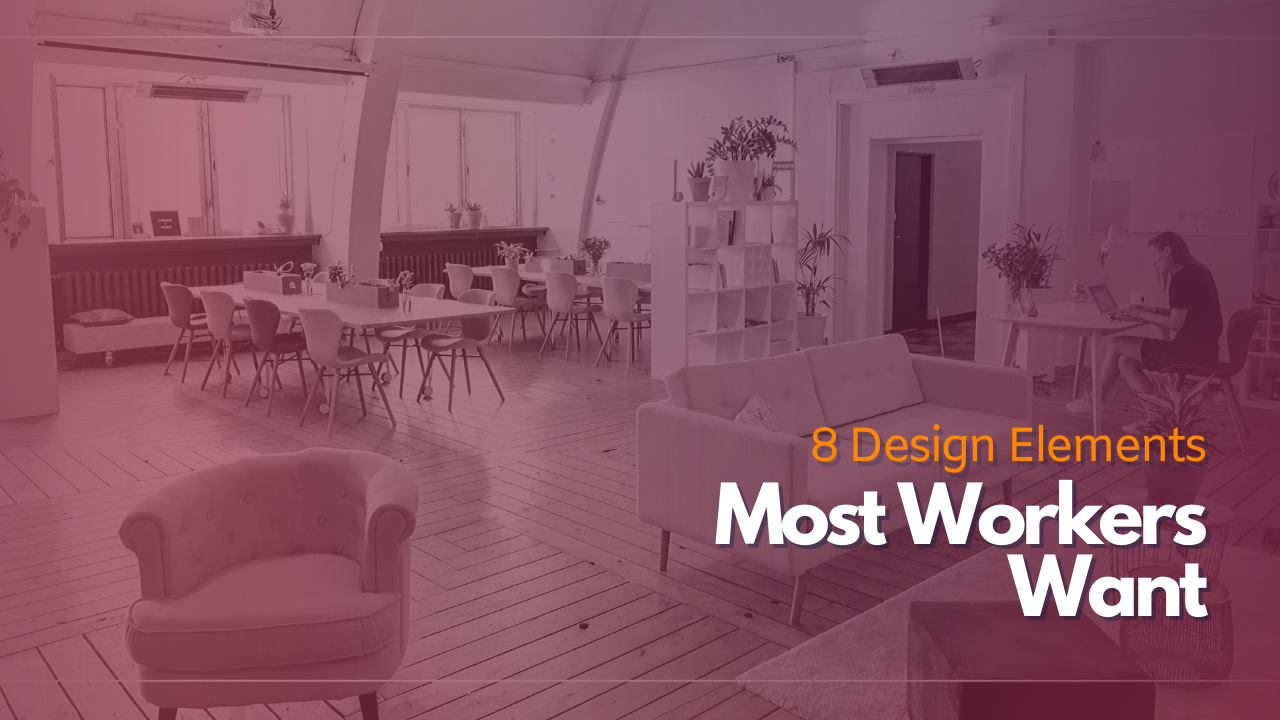- Data from a 2019 survey by Capital One shows that thoughtfully-designed office spaces “are still top-of-mind for employees”
- The survey shows that workplace design remains a critical element for employee success and productivity, particularly for Millennials.
- The top design elements that workers most want in their workplaces includes natural light, spaces for rest and relaxation, and bold colors.
Earlier this year, Capital One published the findings of its 2019 Capital One Workplace Environment Survey, which sought to determine what it is that workers truly want from their workplace. The survey asked 3,500 full-time office workers to share their thoughts about the impact of workplace design and employee experience on their satisfaction, creativity, and productivity at work.
While there’s been a lot of talk around technology and amenities as people shift towards an experience-driven workplace, “this year’s data (from the survey) shows that thoughtfully-designed office spaces are still top-of-mind for employees.”
Why? It’s simple. Those who work from well thought out spaces tend to perform better. “Employees continue to say that good workplace design drives them to be more innovative and productive.”
Workplace design, therefore, remains a critical element for employee success and productivity.
Capital One found that Millennials in particular place a strong emphasis on well-designed workplaces; 35% of millennials strongly agree that workplace design can help them perform better, compared to 32% of Boomers and 28% of Gen Xers.
8 Design Elements that Workers Most Want
The survey identified the top 8 design elements that workers most want to see in their workplaces:
- Natural light (which has topped the list for three years running)
- Spaces for rest and relaxation
- Individual work areas other than people’s traditional workstation or desk
- Integration of natural and organic materials in or just outside of the office building
- Bold colors
- Easily reconfigurable furniture and spaces
- Collaborative spaces
- Artwork and creative imagery
What Else Do Workers Want?
Other than the above 8 design elements, the survey found that there are 3 underlying themes that workers want their workplace to address.
Flexibility and Adaptability
Capital One found that flexibility and adaptability are critical elements of workplace design. However, they’re looking for flexibility beyond the physical space. “Employees’ highest priority is finding companies with flexible schedules and physical flexibility in the workplace.”
Not only should companies offer flexible working options and a variety of work environments, but “they need to remain adaptable and foster dynamic design to accommodate employees’ changing preferences.”
According to the survey, flexible spaces encourage productivity and creative thinking.
- Nearly 3 in 4 employees say it’s important for their company’s workplace design to be flexible
- 65% say that they are more productive when they change their physical location while working (therefore the need for variety in the workplace)
- 73% say they have their best ideas when they are able to use flexible workspace options
Suggested Reading: “Technology Just Ousted Flexible Work — Did You Notice?”
Mental Health and Wellbeing
The modern workforce wants access to resources that support mental health and wellbeing. The survey found that “nearly all employees agree that it’s important that companies provide spaces and programs to support mental health and wellbeing.”
Keep in mind that one way companies are doing this is by providing employees with the ability to work flexible hours. In fact, 2 out of 3 (67%) of surveyed workers stated that flexible hours promote work satisfaction and 87% of them “agree it’s important that employers create spaces and programs to support mental health and wellbeing.”
To foster wellbeing in the workplace, workers are also increasingly asking for access to natural light and 42% would like to have quiet spaces in the office to unplug. 89% of surveyed workers believe that “they are able to work better when they have spaces in the workplace to take a break.”
Taking regular breaks can help maintain optimal productivity levels; it can also reduce stress and prevent burnout. These break out spaces can also lead to spontaneous encounters that can help workers bond.
The survey found that although many crave a connection with nature in the workplace, 36% have no connection with it in the workplace. This applies to various types of connections: visual (windows and natural light), physical (outdoor work spaces or break areas), and material (indoor plants, water features, and wooden textures or surfaces).
Suggested Reading: “14 Patterns of Biophilic Design to Improve Health and Wellbeing in the Workplace”
Dynamic and Adaptable Design
Not only should the workplace be flexible, but it should also be dynamic; meaning that workers should have some control over certain workplace features in order for it to better support their work needs. In this sense, dynamic and adaptable design and furniture are crucial.
- 73% of workers say they are able to work better when they have access to flexible furniture arrangements such as different seating or standing options
- 77% of employees say they perform better when their workplace provides spaces for collaboration
- 88% say they perform better when they have space for focused, heads-down work.
Workplace design underpins performance and innovation in the workplace; this requires that workers have choice and control in the workplace. Unfortunately, 56% of workers say their company’s current workplace design and environment doesn’t encourage them to be innovative.
The workplace should support the varying needs and tasks that today’s knowledge workers carry out. This starts with good design and is followed by access to the right tools, resources, and amenities.


 Dr. Gleb Tsipursky – The Office Whisperer
Dr. Gleb Tsipursky – The Office Whisperer Nirit Cohen – WorkFutures
Nirit Cohen – WorkFutures Angela Howard – Culture Expert
Angela Howard – Culture Expert Drew Jones – Design & Innovation
Drew Jones – Design & Innovation Jonathan Price – CRE & Flex Expert
Jonathan Price – CRE & Flex Expert














